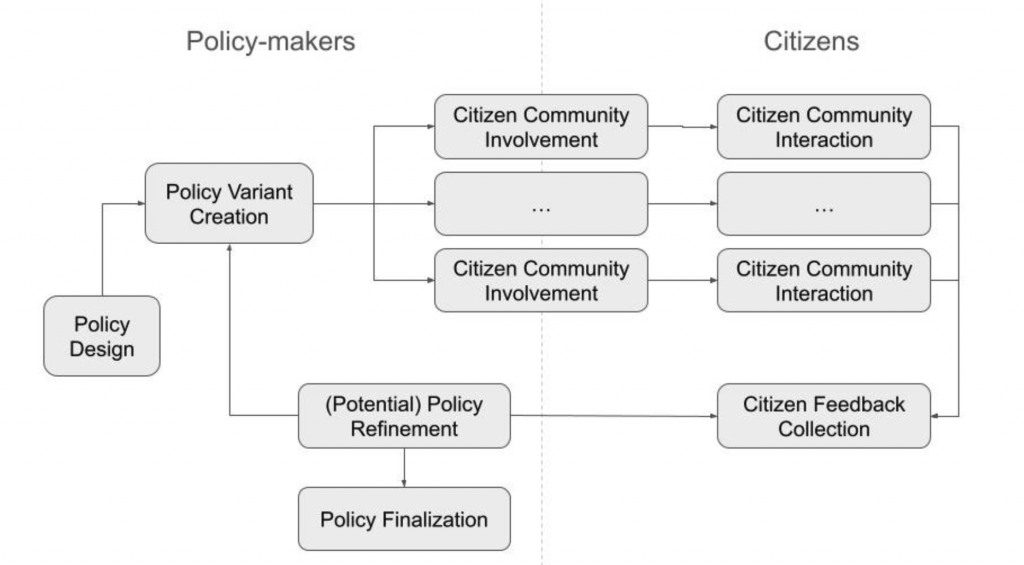Digitally-supported participatory methods are often used in policy-making to develop inclusive policies by collecting and integrating citizen’s opinions. However, these methods fail to capture the complexity and nuances in citizen’s needs, i.e., citizens are generally unaware of other’s needs, perspectives, and experiences. Consequently, policies developed with this underlying gap tend to overlook the alignment of multistakeholder perspectives, and design policies based on the optimization of high-level demographic features.
In our recent study, we propose a method to enable citizens understand other’s perspectives and calibrate their positions. First, we collected requirements and design principles to develop our approach by involving stakeholders and experts in policymaking in a series of workshops. Then, we conducted a crowdsourcing study with 420 participants to compare the effect of different text and images, on people’s initial and final motivations and their willingness to change opinions. We observed that both influence participant’s opinion change, however, the effect is more pronounced for textual modality. Finally, we discuss overarching implications of designing with empathy to mediate alignment of citizen’s perspectives. This is the schematic representation of the process to engage citizen communities in shaping and refining policies:

The results of the analysis found that showing peoples’ motivations help in shifting opinions when compared to the control condition, even after adjusting for confounding factors. Moreover, the crowdsourcing empirical study identified that empathy (both the Empathic Concern and the Perspective Taking levels)is unrelated to opinion change. Regarding behavior, participants who change opinions tend to choose more motivations. Also, participants who choose the middle opinion tend to select more motivations corresponding to the middle opinion and fewer motivations corresponding to the non-middle opinion. Below we explain these findings in more detail.
This work has been published in the Proceedings of the ACM on Human-Computer Interaction, Volume 8, Issue CSCW2 Article No.: 369, Pages 1 – 42 (2024). https://doi.org/10.1145/3686908

